An Agile AI and IoT-Augmented Smart Farming: A Cost-Effective Cognitive Weather Station
Abstract
:1. Introduction
1.1. Smart Farming
1.2. Rationale of the SW and HW Architecture of the Proposed Method
1.3. Objectives and Hypotheses
- The different trained models, within the proposed platform, support the generation of AI-based information to assist different end-users roles such as farmers, researchers, and engineers.
- The proposed architecture is mainly based on open-source technologies to serve the low-cost philosophy adopted in this paper. The open-source environments chosen to allow us to customize source codes and adapt them for our exact needs with minimal cost of use. Therefore, usage of Debian OS rather than Microsoft OS will allow us to modify easily the OS Kernel to optimize the performance of our station in terms of the boot, background processes, usage of command lines, and enhancing the CPU usage and speed which lead eventually to enhance energetic performance. Furthermore, the long-term goal of the system is to propose a flexible platform based on the layering approach to enable the system’s flexibility and continuous upgrade.
- The system design follows a hybrid architecture that combines centralized and distributed techniques for devices’ connection which will lead to higher performance. The design enhances the system’s portability, scalability, interoperability, and compatibility with different technologies, protocols, and equipment’s vendors. The Hardware (HW) design is based on deploying heterogeneous nodes that are not dependable on the vendor of the components, the type of the sensors, or the end node performance. The proposed distributed agro-weather station plays a Base Station (BS) role that embeds different agents. The BS is connected to several heterogeneous wireless nodes. The nodes, including the BS, are equipped with different heterogeneous sensors to measure the field’s temperature and humidity, wind speed and direction, and atmospheric pressure. The network continuously monitors the field and provides insights and predictions through a local server implemented within the BS. Since energy efficiency is a crucial metric in IoT systems, our network ensures good energy efficiency management without impacting system performance.
- The wireless nodes design which is based on standardized transmission protocols such as MQTT allows us to have good interoperability between nodes and different BS. This design approach is also done in order to fulfill the plug-and-play feature in this platform. Therefore, any wireless node within our system can be redeployed within other platforms as long as they follow the same protocol.
- We design the Graphical User Interface (GUI) layer to ensure visibility, accessibility, ease of use, efficiency, and attractiveness. The software design ensures real-time and near-real-time data communication and processing between network sensors and the base station. The agro-weather station is AI-powered to support farmers and researchers with environment’s data trends and eventually allow them to make fact-based decisions such as when planting, spraying, and even harvesting. Within the BS, the AI is an agent that is connected to an external Google Collaboratory environment (Colab) which is a standalone hosted Jupyter notebook that provides free computing resources for background data analysis and modeling. Even though it is possible to bypass the usage of Colab and rely only on a local Jupyter netbook running on the local server, however, we should avoid consuming local BS resources on the training tasks and allocate these resources for other services such as sensing, wireless transmission, cronjob services, local web-server, etc. The Graphical User Interface (GUI) ensures utility and warranty and avoids complications whenever end users are connected, and data is consulted.
- The system’s services such as remote access, web services, database updates, and telegram chat-bot are built on top as standalone agents. The multi-agent system (MAS) approach helps enhance the BS performance by creating scalable, reliable, efficient, and maintainable modular services. In addition, the MAS approach enables the stateless configuration of services. Therefore, services can be updated through a Start, Upgrade, and Stop (SUS) approach. The SUS approach allows instant execution of predefined scripts for each operation. The scripts are hosted in accessible repository under/usr/local/bin. The file system/usr/local/bin contains different scripts that normal users can access and use, this repository protects scripts from being modified when the system’s updates are planned or executed. Consequently, facilitating different modules’ operation, maintenance, and troubleshooting.
- System security approach and design have been implemented in our platform. Access to the BS is ensured locally with user credentials or remotely through a secured VPN tunnel. We deploy OpenVPN within the BS. Meanwhile, because OpenVPN needs to follow an assigned IP address, while our system is connected to a public address, we can overcome this challenge by deploying a NoIP client within our BS that plays the role of a dynamic DNS pointing continuously to a static hostname such as “www.ensem-aws.tk” accessed on 13 April 2021. Different user roles are configured with different roles and privileges. Additionally, offline data snapshots of the OAM & Data dashboards are stored in the cloud and consulted separately.
- The system building costs are essential in our platform’s design. Capital expenditures (Capex) and operating expenses (Opex) are the leading Key Performance Indicators (KPIs) taken into consideration for solution design and prototyping. Thus, the cost analysis is ensured to support presenting the system’s short-term and long-term benefits for different users.
2. Materials and Methods
2.1. System Design
2.1.1. Perception Layer [Back-End]
- Nodes portability: nodes are portable across the network without any physical or logical constraints.
- Nodes scalability: the nodes can handle additional functions by deploying different sensors in any future nodes’ expansion or upgrade.
- Nodes interoperability: the nodes can communicate with different BS based on different vendors without critical constraints.
2.1.2. Transmission Layer [Back-End]
2.1.3. Presentation Layer [Front-End]
- Data visibility: to ensure a high level of clarity that allows farmers and researchers to monitor, analyze and make smart in-depth decisions.
- Data accessibility: to provide an open and accessible data format that different system’s agents can explore for different use cases such as modeling, training, evaluation performance, etc.
- Ease of use: to ensure that different user roles can use our GUI comfortably. Thus, we make a baseline that different users should explore report overview in the 30s without compromising data quality.
- System attractiveness: to create a dynamic and appealing GUI with an attractive and balanced design.
- System alerts: to monitor the evolution of the critical parameters closely and provide timely alerts through different channels such as emails and telegram chat-bot.
2.1.4. Management Layer [Front-End]
2.1.5. Middleware Layer [Back-End]
- The deployed agents that are part of the perception layer and its different heterogeneous sensors and components.
- The presentation layer and its graphical presentation and reporting.
- The transmission layer and its protocols.
- The management layer and its operation and maintenance functionalities.
2.2. System Implementation
2.2.1. Hardware Design
- The deployment of Telegram Bot messaging services instead of cellular messaging for alert generation.
- The use of remote accessible web-based services for data visualization instead of local screen. Tools such as Grafana and Chart.JS library.
2.2.2. Software Design
2.2.3. Neural Network Model
2.2.4. Dataset for Model Building
2.2.5. Model Accuracy
- RMSE, MASE: The calculation of the Root Mean Square Deviation (RMSE) represents the square root of the average of squared errors. It is mainly computed to measure the deviation between the actual values and the prediction values to define the accuracy of different models. The MASE was proposed in [49] as an assessment technique to define the accuracy of forecasts in regression models. As a mean absolute approach, MASE uses the ratio of errors which is allowing it to be independent of the scale of the forecaster. The RMSE and the MASE can be calculated following the equations:where is the predicted value associated with the actual value X, and n is the size of the dataset. The larger the MASE and the RMSE mean, the enormous difference between the predicted and actual values, while the smaller the MASE and the RMSE mean, the closer the prediction values to the actual values.
- Index of Agreement: The Willmott’s index of agreement [46], , measures the model’s relative accuracy in a range that varies from 0 to 1, with 0 indicating no agreement between the model predicted values and real observations and 1 indicating a perfect fit [50]. The index can be computed following the equation:where X is the real measured values associated to the predicted values , is the average value of the measurements, and is the average value of the predicted measurements.
3. Results
3.1. System Workflow
3.2. Experimental Results
3.2.1. System’s Performance
3.2.2. System’s Security
- DDOS attacks.
- Phishing attacks
- Password sharing.
- Vulnerable backups.
- Leakage of information.
3.2.3. Weather Monitoring
- Assist in understanding the various effects of temperature and humidity on plants and crop productivity.
- Adapt the crop type (wheat, oats, potatoes, etc.) based on the period.
- Select the seed quality based on the season.
- Select and trigger automation action (e.g., irrigation) based on a set of parameters (e.g., temperature threshold).
- Select the best time for proper soil preparation.
- Prevent plants damaging by choosing the best timing (high humidity and temperature) to apply pesticides, since treatments should be applied in early to allow foliage to dry before reaching 29–32 °C [51]
- Lower production costs through the usage of the right wind turbines for electricity generation.
- Increase crops profits.
- Understand the impact of winds on plants and crop production (plants seeding, damaging, etc.)
- Secure reliable data for implementation of customized ML algorithms for dedicated farming fields.
3.2.4. LSTM Model Implementation and Validation
4. Discussion
4.1. Design Issues
4.2. Comparison with Other Existing Systems
- Resources’ optimization: Our proposed work relies on a fully containerized architecture, where services are not only lightweight but scalable, agile, and portable. This makes the agro-weather station’s full software architecture manageable and reproducible within a very short amount of time. It allows us to have very reliable and optimized micro-services such as local web server, time-series database, VPN server, etc that consume wisely the BS’s resources such as CPU, memory, and network as presented in Figure 11. Meanwhile, all the studied works in this article [20,21,22,23,24,25,26,27,28,29,30,52,53,54,55,56,57,58,59] are based on classical low-performance system on chips (SoCs) in designing and implementing station. The used SoCs such as Arduino microcontroller doesn’t support multitasking such as Raspberry Pi micro-computer, which limit the performance of the stations to basic monitoring tasks.
- Cost analysis: In our work, we provide an Opex and Capex deep analysis to support the cost-effectiveness approach targeted in this work. Thus, we estimated the cost of investment to build the agro-weather station at 176 $ as depicted in Section 2.2.1. While, works presented in [22,25,26,30,57,58,59] have claimed development of a low-cost-based system for smart farming, meanwhile no one of these contributions has provided a detailed operation based analysis and capital based costing.
- Quality of services: When studying the literature, we can see that there is a huge limitation when it comes to the deployment of a fully multi-agent-based architecture in systems’ design. In [28] the author presents a logical tailored approach for multi-user architecture design. In [21,22,23], the authors proposed the deployments of advisory systems either for early disease detection or crop productivity management. However, the proposed works focus on the design of a generic prototype rather than a customized approach relevant to each user type. Meanwhile, our system tries to provide different features adapted to different users based on real use-cases. Remote access to engineers and researchers, temperature forecasting for farmers and researchers, data security for all users are all standalone agents within the BS. Each agent ensures the utility and warranty of its functions and services.
- Networking: We address the networking challenge based on fully agile architecture embedding different heterogeneous nodes. Our system supports multiple protocols for backbone transmission protocols such as (MQTT, NRF24L01, LAN). The platform is also extended for other protocols. Additionally, we create a system that supports plug-and-play nodes as described in Section 3.1. In our platform, we experiment with the proposed transmission protocols through the end-to-end monitoring ecosystem. Meanwhile, only [25] presents an adaptive mechanism for reliable smart farming. However, the technique is only dealing with an isolated scope which is transmission without validating the system by an end-to-end smart farming platform. While, other contributions rely on singe transmission protocol such as in [20,22,23,52,55,56,57,58,59] or don’t even support wireless transmission such as in [21,24].
- Artificial Intelligence: AI becomes a necessity in modern applications and services. In our system, we deploy a high-performing LSTM model part of RNN for temperature forecasting. The deployed model as depicted in Section 3.2.3 shows a high-level performance in temperature prediction which allows the possibility to train and deploy similar models for other meteorological data such as humidity, pressure, wind speed, etc. In our system, we propose the hybrid data collection where historical data is continuously enhanced by the BS itself for a continuous model’s improvement. The BS supports tasks automation in form of cronjob and through a standalone deployed agent for alerts notification. The proposed work in [54] proposes a temperature foresting model based on ANN (Artificial Natural Network), meanwhile, it is known that the ANN is less powerful than the RNN (adopted in this paper). ANN doesn’t support the recurrent connections and is considered to be powerful with tabular data and text data rather than the sequence data which we have in meteorological parameters. Additionally, in [21,22,23] the authors create advisory systems for decision making. The proposed systems require a minimum level of knowledge, while in the developing countries the lack of technological awareness among farmers will be challenging for the usage of such systems. The same technological bottleneck is impacting the usage of AI within drones framework in crop management such as in [30,56]. In [53] authors only present a conceptual model that lacks testing and validation. Meanwhile, no AI implementation is considered in the works in [20,24,25,26,27,28,29,52,55,57,58,59].
- Operation and Maintenance: The studied works in this effort focus on the system’s utility through the functionalities and services offered by the proposed platforms, rather than focusing on the warranty through the assurance that the developed platforms and services will deliver the needed requirements. Therefore, no system surveyed in this work offers the possibility to have a holistic dashboard for operation and maintenance. Thus, we have created a dedicated dashboard part of the management layer as presented in Section 3.1. The dashboard will allow users such as engineers to consult different performance metrics such as network usage and packet drops, CPU load, operating system’s threads, and processes, etc. continuously for management purposes.
- Remote access: None of the surveyed works in this study allows the possibility to have ultimate remote access to the deployed platform and its components. Only conceptual architecture with remote accessibility feature was proposed in [28] and partial data consultation was proposed in [54]. Meanwhile, as part of the system’s customization adopted in this work, we think that full remote accessibility allows tremendous ease of use and cost-saving when it comes to consulting the platform and the locally collected data. Thus, the proposed platform allows different users to connect remotely to the BS and consult all components through the GUI or the SSH sessions.
- Security: Even though smart farming isn’t a critical domain when it comes to data sensitivity. However, privacy in today’s world is a huge concern for different users. Remote access comes with privacy challenges. As mentioned in Section 2.2.2 and Section 3.2.2 our platform supports the establishment of end-to-end VPN tunnels that add an extra layer of privacy and security when using remote access. The deployed VPN server allows peers to connect using the pre-generated secret keys and certificates that are based on strong 256-bit encryption. Even with the high-security concerns especially in the Covid-19 period, none of the others experimental platforms address or implement any feature or approach for system’s and services’ security and reliability.
5. Conclusions
- Add more advanced functions to enhance the system performance, such as AI-based power management and fault detection agents.
- Design and create predefined test cases and scenarios that enable extreme ease of use and service for the enhancement of automation.
- Design AI-based mobility management that can be implemented to BS to reconfigure the platform without the need for human interaction.
- Migrate the solution to a pure native cloud and support more communication technologies like Lora, Sigfox, and NBIoT.
Supplementary Materials
Author Contributions
Funding
Institutional Review Board Statement
Informed Consent Statement
Data Availability Statement
Acknowledgments
Conflicts of Interest
Abbreviations
| AC | Alternative Current |
| AI | Artificial Intelligence |
| ANN | Artificial Neural Network |
| ARM | Advanced RISC Machines |
| CLI | Command Line Interface |
| Covid-19 | Coronavirus disease-2019 |
| CPU | Central Processing Unit |
| DB | Data Base |
| DC | Direct Current |
| DOS | Denial of Service Attacks |
| FTP | File Transfer Protocol |
| HDD | Hard Disk Drive |
| HTTP | Hyper Text Transfer Protocol |
| HW | Hardware |
| IoT | Internet of Things |
| GUI | Graphical User Interface |
| KPI | Key Performance Indicators |
| LSTM | Long Short Term Memory |
| M2M | Machine-to-Machine |
| MQTT | Message Queue Telemetry Transport |
| MASE | Mean Absolute Scaled Error |
| NN | Neural network |
| OASIS | Organization for the Advancement of Structured Information Standards |
| O&M | Operation and Maintenance |
| OS | Operating System |
| PA | Precision Agriculture |
| PaaS | Platform as a Service |
| RISC | Reduced Instruction Set Computing |
| RMSE | Root Mean Square Error |
| RNN | Recurrent Neural Network |
| SF | Smart Farming |
| SSL | Secure Socket Layer |
| SUS | Start Upgrade Stop |
| SW | Software |
| STaaS | Storage as a Service |
| TLS | Transport Layer Security |
| UD | User Datagram Protocol |
| VM | Virtual Machine |
| VPN | Virtual Private Network |
| SVM | Support Vector Machine |
| SSH | Secure Shell |
| WSN | Wireless Sensor Network |
References
- United Nations; Department of Economic and Social Affairs; Population Division. World Population Prospects Highlights, 2019 Revision Highlights, 2019 Revision; United Nations: New York, NY, USA, 2019. [Google Scholar]
- O’Grady, M.J.; O’Hare, G.M. Modelling the smart farm. Inf. Process. Agric. 2017, 4, 179–187. [Google Scholar] [CrossRef]
- Julian, Q.; Nat, D. Climate Change and Land Tenure; IIED (International Institute for Environment and Development) and Natural Resources Institute, University of Greenwich: London, UK, 2008; p. 68. [Google Scholar]
- Ingram, G.K.; Hong, Y.H. (Eds.) Climate Change and Land Policies; Lincoln Institute of Land Policy: Cambridge, MA, USA, 2011. [Google Scholar]
- Adomako, T.; Ampadu, B. The Impact Agricultural Practices on Environmental Sustainability in Ghana: A Review. J. Sustain. Dev. 2015, 8, 70. [Google Scholar] [CrossRef]
- Mohanavelu, A.; Naganna, S.R.; Al-Ansari, N. Irrigation Induced Salinity and Sodicity Hazards on Soil and Groundwater: An Overview of Its Causes, Impacts and Mitigation Strategies. Agriculture 2021, 11, 983. [Google Scholar] [CrossRef]
- Wheeler, T.; von Braun, J. Climate Change Impacts on Global Food Security. Science 2013, 341, 508–513. [Google Scholar] [CrossRef]
- Walter, A.; Finger, R.; Huber, R.; Buchmann, N. Opinion: Smart farming is key to developing sustainable agriculture. Proc. Natl. Acad. Sci. USA 2017, 114, 6148–6150. [Google Scholar] [CrossRef] [Green Version]
- Akyildiz, I.; Su, W.; Sankarasubramaniam, Y.; Cayirci, E. A survey on sensor networks. IEEE Commun. Mag. 2002, 40, 102–114. [Google Scholar] [CrossRef] [Green Version]
- Yick, J.; Mukherjee, B.; Ghosal, D. Wireless sensor network survey. Comput. Netw. 2008, 52, 2292–2330. [Google Scholar] [CrossRef]
- Dâmaso, A.; Freitas, D.; Rosa, N.; Silva, B.; Maciel, P. Evaluating the Power Consumption of Wireless Sensor Network Applications Using Models. Sensors 2013, 13, 3473–3500. [Google Scholar] [CrossRef]
- Faid, A.; Sadik, M.; Sabir, E. IHEE: An Improved Hybrid Energy Efficient Algorithm for WSN. In Advances in Information and Communication; Arai, K., Ed.; Springer International Publishing: Cham, Switzerland, 2021; pp. 283–298. [Google Scholar]
- Trendov, N.M.; Varas, S.; Zeng, M. Digital Technologies in Agriculture and Rural Areas—Status Paper; FAO: Rome, Italy, 2019; p. 157. [Google Scholar]
- Farooq, M.S.; Riaz, S.; Abid, A.; Umer, T.; Zikria, Y.B. Role of IoT Technology in Agriculture: A Systematic Literature Review. Electronics 2020, 9, 319. [Google Scholar] [CrossRef] [Green Version]
- Villa-Henriksen, A.; Edwards, G.T.; Pesonen, L.A.; Green, O.; Sørensen, C.A.G. Internet of Things in arable farming: Implementation, applications, challenges and potential. Biosyst. Eng. 2020, 191, 60–84. [Google Scholar] [CrossRef]
- Jawad, H.; Nordin, R.; Gharghan, S.; Jawad, A.; Ismail, M. Energy-Efficient Wireless Sensor Networks for Precision Agriculture: A Review. Sensors 2017, 17, 1781. [Google Scholar] [CrossRef] [Green Version]
- Khanna, A.; Kaur, S. Evolution of Internet of Things (IoT) and its significant impact in the field of Precision Agriculture. Comput. Electron. Agric. 2019, 157, 218–231. [Google Scholar] [CrossRef]
- Talaviya, T.; Shah, D.; Patel, N.; Yagnik, H.; Shah, M. Implementation of artificial intelligence in agriculture for optimisation of irrigation and application of pesticides and herbicides. Artif. Intell. Agric. 2020, 4, 58–73. [Google Scholar] [CrossRef]
- Navarro, E.; Costa, N.; Pereira, A. A Systematic Review of IoT Solutions for Smart Farming. Sensors 2020, 20, 4231. [Google Scholar] [CrossRef]
- Gangwar, D.S.; Tyagi, S.; Soni, S.K. A conceptual framework of agroecological resource management system for climate-smart agriculture. Int. J. Environ. Sci. Technol. 2019, 16, 4123–4132. [Google Scholar] [CrossRef]
- Khattab, A.; Habib, S.E.; Ismail, H.; Zayan, S.; Fahmy, Y.; Khairy, M.M. An IoT-based cognitive monitoring system for early plant disease forecast. Comput. Electron. Agric. 2019, 166, 105028. [Google Scholar] [CrossRef]
- Muzafarov, F.; Eshmuradov, A. Wireless sensor network based monitoring system for precision agriculture in Uzbekistan. TELKOMNIKA Telecommun. Comput. Electron. Control 2019, 17, 10. [Google Scholar] [CrossRef] [Green Version]
- Nawandar, N.K.; Satpute, V.R. IoT based low cost and intelligent module for smart irrigation system. Comput. Electron. Agric. 2019, 162, 979–990. [Google Scholar] [CrossRef]
- Doshi, J.; Patel, T.; Bharti, S.k. Smart Farming using IoT, a solution for optimally monitoring farming conditions. Procedia Comput. Sci. 2019, 160, 746–751. [Google Scholar] [CrossRef]
- Ramli, M.R.; Daely, P.T.; Kim, D.S.; Lee, J.M. IoT-based adaptive network mechanism for reliable smart farm system. Comput. Electron. Agric. 2020, 170, 105287. [Google Scholar] [CrossRef]
- Sadowski, S.; Spachos, P. Wireless technologies for smart agricultural monitoring using internet of things devices with energy harvesting capabilities. Comput. Electron. Agric. 2020, 172, 105338. [Google Scholar] [CrossRef]
- Popović, T.; Latinović, N.; Pešić, A.; Žarko, Z.; Krstajić, B.; Djukanović, S. Architecting an IoT-enabled platform for precision agriculture and ecological monitoring: A case study. Comput. Electron. Agric. 2017, 140, 255–265. [Google Scholar] [CrossRef]
- Köksal, Ö.; Tekinerdogan, B. Architecture design approach for IoT-based farm management information systems. Precis. Agric. 2019, 20, 926–958. [Google Scholar] [CrossRef] [Green Version]
- Leelavinodhan, P.B.; Vecchio, M.; Antonelli, F.; Maestrini, A.; Brunelli, D. Design and Implementation of an Energy-Efficient Weather Station for Wind Data Collection. Sensors 2021, 21, 3831. [Google Scholar] [CrossRef]
- Almalki, F.A.; Soufiene, B.O.; Alsamhi, S.H.; Sakli, H. A Low-Cost Platform for Environmental Smart Farming Monitoring System Based on IoT and UAVs. Sustainability 2021, 13, 5908. [Google Scholar] [CrossRef]
- Faid, A.; Sadik, M.; Sabir, E. IoT-based Low Cost Architecture for Smart Farming. In Proceedings of the 2020 International Wireless Communications and Mobile Computing (IWCMC), Limassol, Cyprus, 15–19 June 2020; pp. 1296–1302. [Google Scholar] [CrossRef]
- Faid, A.; Sadik, M.; Sabir, E. EACA: An Energy Aware Clustering Algorithm for Wireless IoT Sensors. In Proceedings of the 2021 28th International Conference on Telecommunications (ICT), Vancouver, BC, Canada, 29–30 April 2021; pp. 1–6. [Google Scholar] [CrossRef]
- Aminikhanghahi, S.; Cook, D.J. A survey of methods for time series change point detection. Knowl. Inf. Syst. 2017, 51, 339–367. [Google Scholar] [CrossRef] [Green Version]
- Grigorik, I. Making the Web Faster with HTTP 2.0. Commun. ACM 2013, 56, 42–49. [Google Scholar] [CrossRef]
- Deschambault, O.; Gherbi, A.; Légaré, C. Efficient Implementation of the MQTT Protocol for Embedded Systems. J. Inf. Process. Syst. 2017, 13, 26–39. [Google Scholar]
- Microchip Technology. ATmega328P Datasheet. 2021. Available online: https://www.microchip.com/wwwproducts/en/ATmega328P (accessed on 13 April 2021).
- Nordic Semiconductor. nRF24L01 Datasheet. 2021. Available online: https://www.sparkfun.com/datasheets/Components/SMD/nRF24L01Pluss_Preliminary_Product_Specification_v1_0.pdf (accessed on 13 April 2021).
- Al-Shorman, M.Y.; Al-Kofahi, M.M.; Al-Kofahi, O.M. A practical microwatt-meter for electrical energy measurement in programmable devices. Meas. Control 2018, 51, 383–395. [Google Scholar] [CrossRef]
- Paunski, Y.K.; Angelov, G.T. Performance and power consumption analysis of low-cost single board computers in educational robotics. IFAC-PapersOnLine 2019, 52, 424–428. [Google Scholar] [CrossRef]
- Potdar, A.M.; D G, N.; Kengond, S.; Mulla, M.M. Performance Evaluation of Docker Container and Virtual Machine. Procedia Comput. Sci. 2020, 171, 1419–1428. [Google Scholar] [CrossRef]
- Struckov, A.; Yufa, S.; Visheratin, A.A.; Nasonov, D. Evaluation of modern tools and techniques for storing time-series data. Procedia Comput. Sci. 2019, 156, 19–28. [Google Scholar] [CrossRef]
- Maqsood, I.; Khan, M.R.; Abraham, A. An ensemble of neural networks for weather forecasting. Neural Comput. Appl. 2004, 13, 1433–3058. [Google Scholar] [CrossRef]
- Kreuzer, D.; Munz, M.; Schlüter, S. Short-term temperature forecasts using a convolutional neural network—An application to different weather stations in Germany. Mach. Learn. Appl. 2020, 2, 100007. [Google Scholar] [CrossRef]
- Hochreiter, S.; Schmidhuber, J. Long Short-Term Memory. Neural Comput. 1997, 9, 1735–1780. [Google Scholar] [CrossRef] [PubMed]
- Kent, R. Chapter 4—Services. In Energy Management in Plastics Processing, 3rd ed.; Kent, R., Ed.; Elsevier: Amsterdam, The Netherlands, 2018; pp. 105–210. [Google Scholar] [CrossRef]
- Willmott, C.J. On the Validation of Models. Phys. Geogr. 1981, 2, 184–194. [Google Scholar] [CrossRef]
- Delle Monache, L.; Nipen, T.; Deng, X.; Zhou, Y.; Stull, R. Ozone ensemble forecasts: 2. A Kalman filter predictor bias correction. J. Geophys. Res. Atmos. 2006, 111. [Google Scholar] [CrossRef]
- Kang, D.; Mathur, R.; Rao, S.T.; Yu, S. Bias adjustment techniques for improving ozone air quality forecasts. J. Geophys. Res. Atmos. 2008, 113. [Google Scholar] [CrossRef] [Green Version]
- Hyndman, R.J.; Koehler, A.B. Another look at measures of forecast accuracy. Int. J. Forecast. 2006, 22, 679–688. [Google Scholar] [CrossRef] [Green Version]
- Willmott, C.J. On the Evaluation of Model Performance in Physical Geography. In Spatial Statistics and Models; Gaile, G.L., Willmott, C.J., Eds.; Springer: Dordrecht, The Netherlands, 1984; pp. 443–460. [Google Scholar] [CrossRef]
- Stack, L.; Dill, J.; Pundt, L.; Raudales, R.; Smith, C.; Smith, T. New England Greenhouse Floriculture Guide; A Management Guide for Insects, Diseases, Weeds and Growth Regulators. Northeast Greenhouse Conference and Expo. 2017–2018. Available online: https://www.plantgrower.org/uploads/6/5/5/4/65545169/17section_b_2017-18_floriculture_guide.pdf (accessed on 13 April 2021).
- Codeluppi, G.; Cilfone, A.; Davoli, L.; Ferrari, G. LoRaFarM: A LoRaWAN-Based Smart Farming Modular IoT Architecture. Sensors 2020, 20, 2028. [Google Scholar] [CrossRef] [Green Version]
- Ratnakumari, K.; Koteswari, S. Design & implementation of innovative IoT based smart agriculture management system for efficient crop growth. J. Eng. Sci. 2020, 11, 607–616. [Google Scholar]
- Castañeda-Miranda, A.; Castaño-Meneses, V.M. Internet of things for smart farming and frost intelligent control in greenhouses. Comput. Electron. Agric. 2020, 176, 105614. [Google Scholar] [CrossRef]
- Tiglao, N.M.; Alipio, M.; Balanay, J.V.; Saldivar, E.; Tiston, J.L. Agrinex: A low-cost wireless mesh-based smart irrigation system. Measurement 2020, 161, 107874. [Google Scholar] [CrossRef]
- Roy, S.K.; De, D. Genetic Algorithm based Internet of Precision Agricultural Things (IopaT) for Agriculture 4.0. Internet Things 2020, 1, 100201. [Google Scholar] [CrossRef]
- Cicioğlu, M.; Çalhan, A. Smart agriculture with internet of things in cornfields. Comput. Electr. Eng. 2021, 90, 106982. [Google Scholar] [CrossRef]
- Podder, A.K.; Bukhari, A.A.; Islam, S.; Mia, S.; Mohammed, M.A.; Kumar, N.M.; Cengiz, K.; Abdulkareem, K.H. IoT based smart agrotech system for verification of Urban farming parameters. Microprocess. Microsyst. 2021, 82, 104025. [Google Scholar] [CrossRef]
- Gao, D.; Sun, Q.; Hu, B.; Zhang, S. A Framework for Agricultural Pest and Disease Monitoring Based on Internet-of-Things and Unmanned Aerial Vehicles. Sensors 2020, 20, 1487. [Google Scholar] [CrossRef] [PubMed] [Green Version]
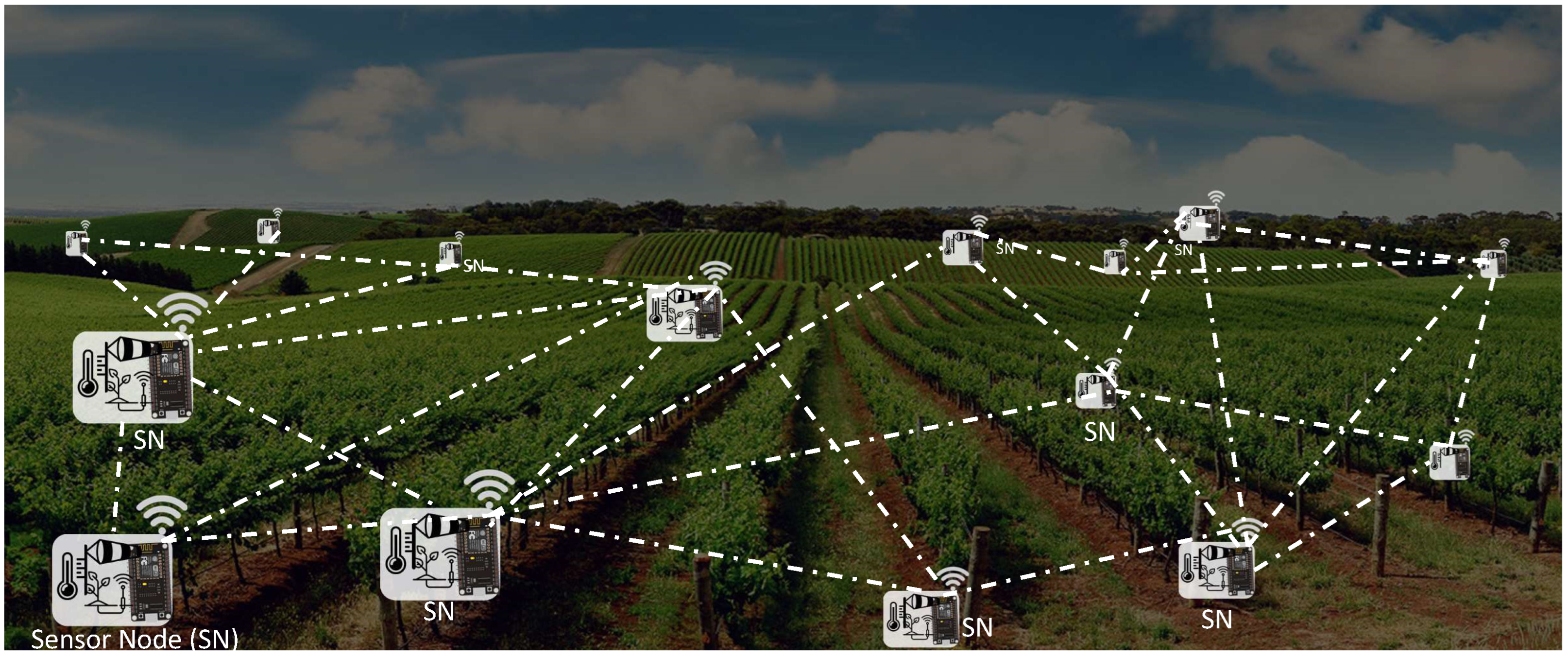
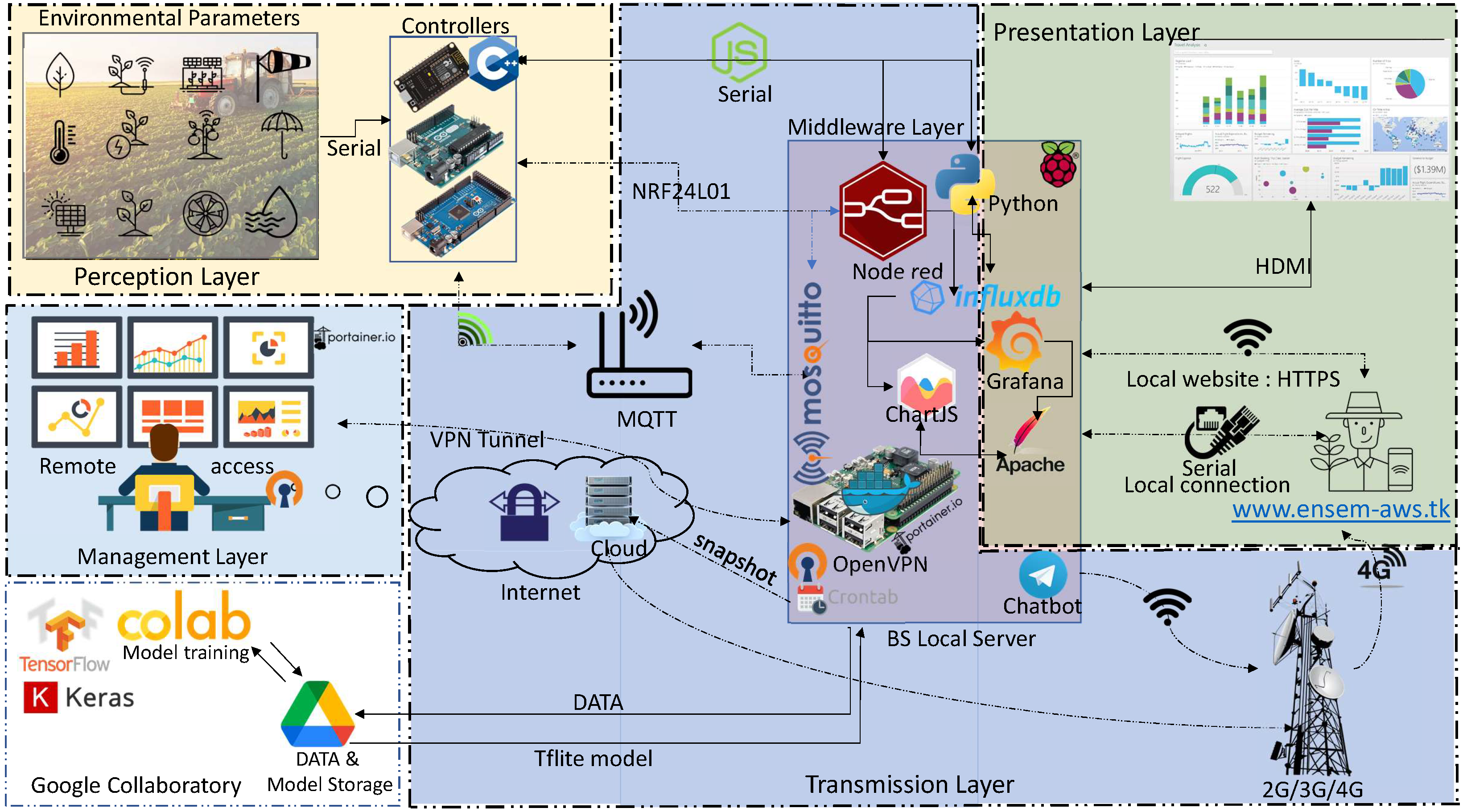
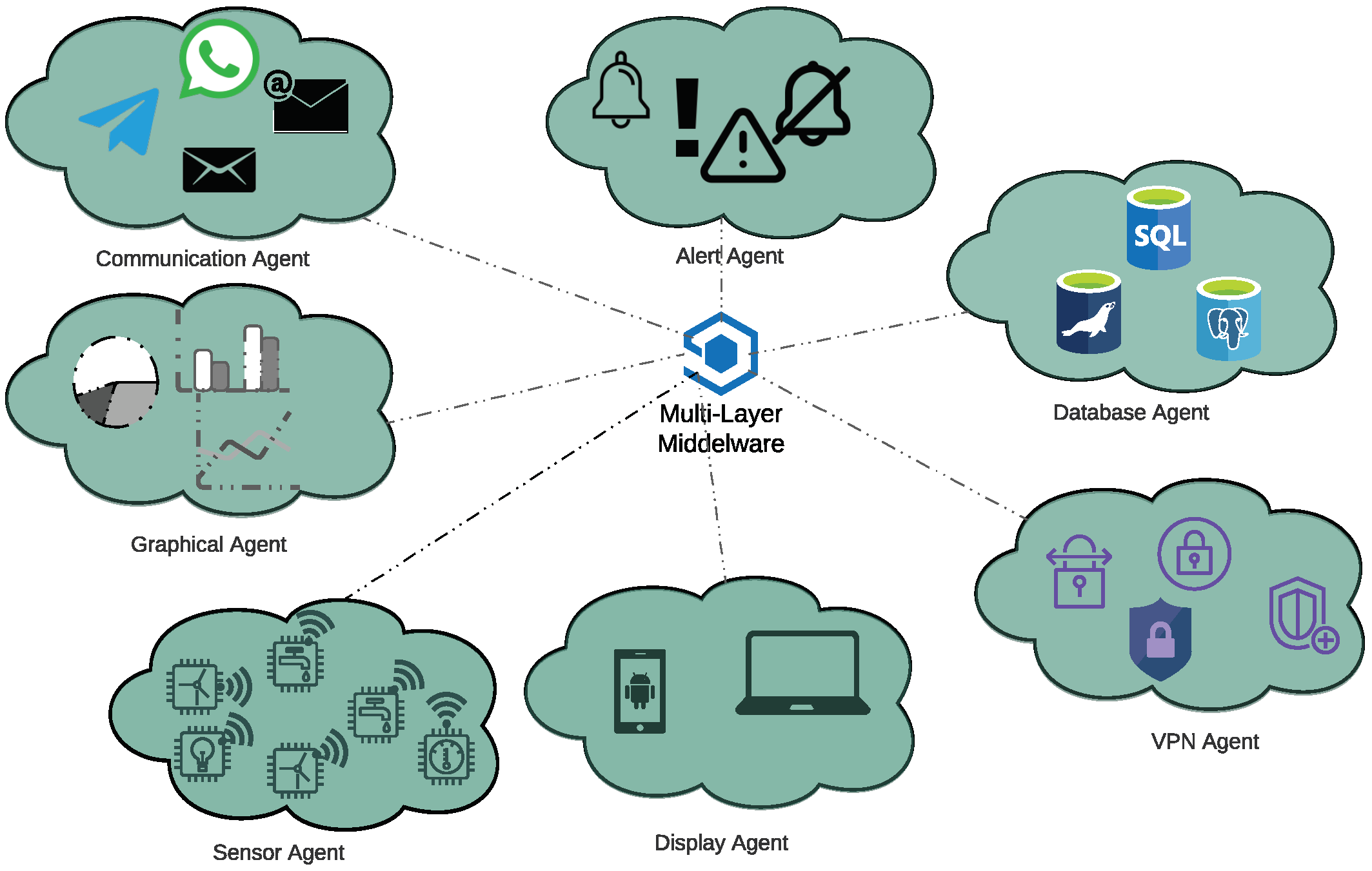
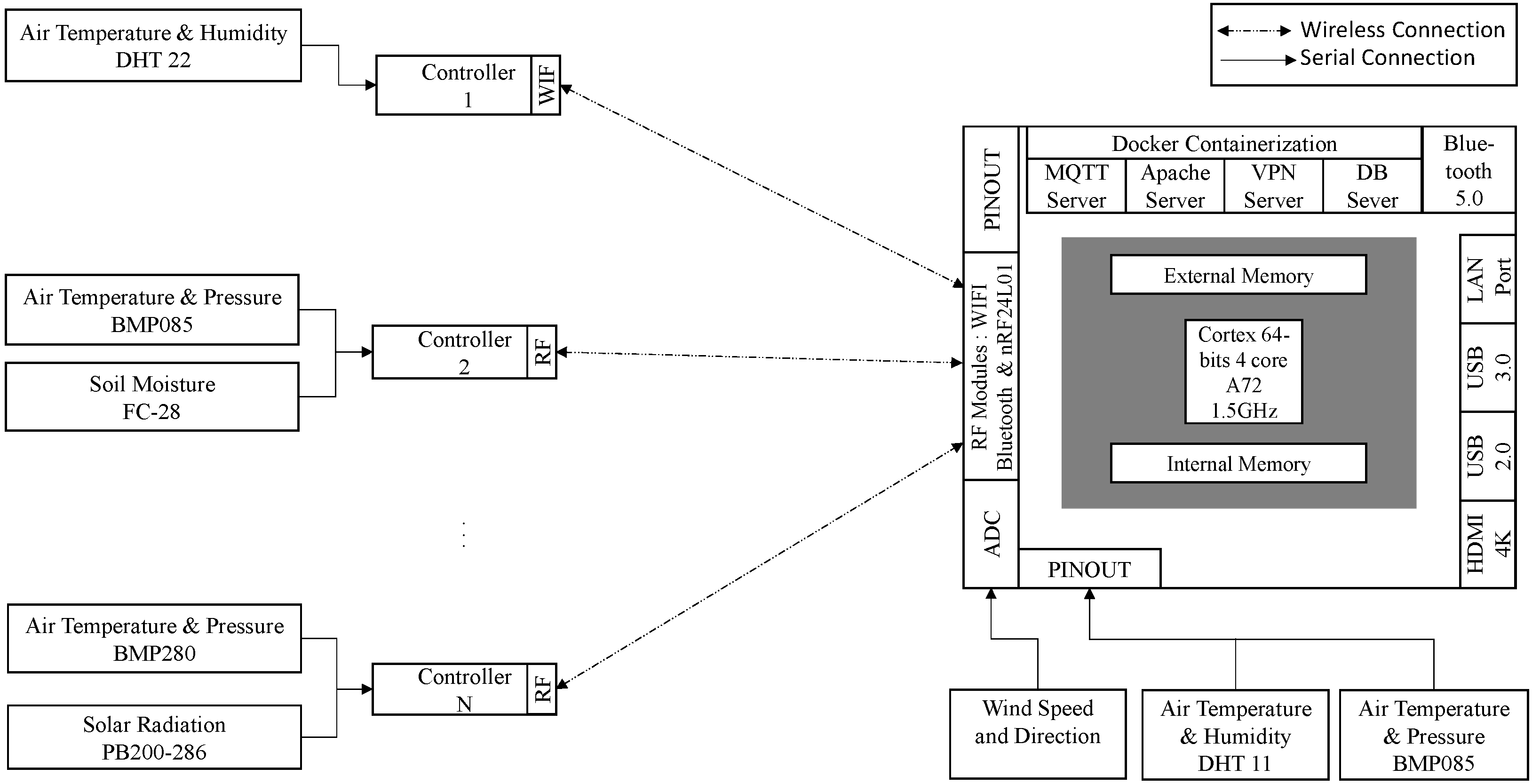
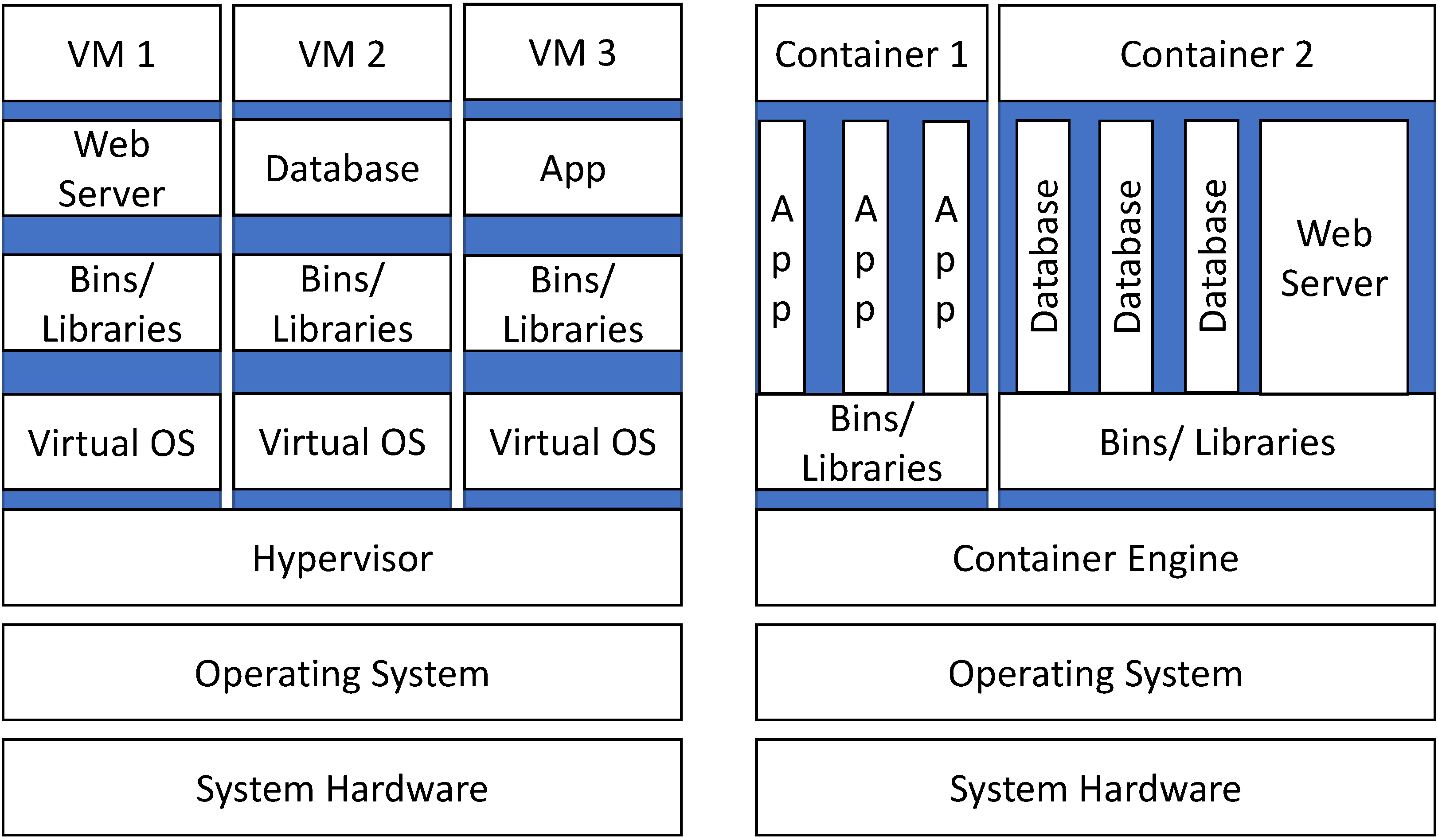
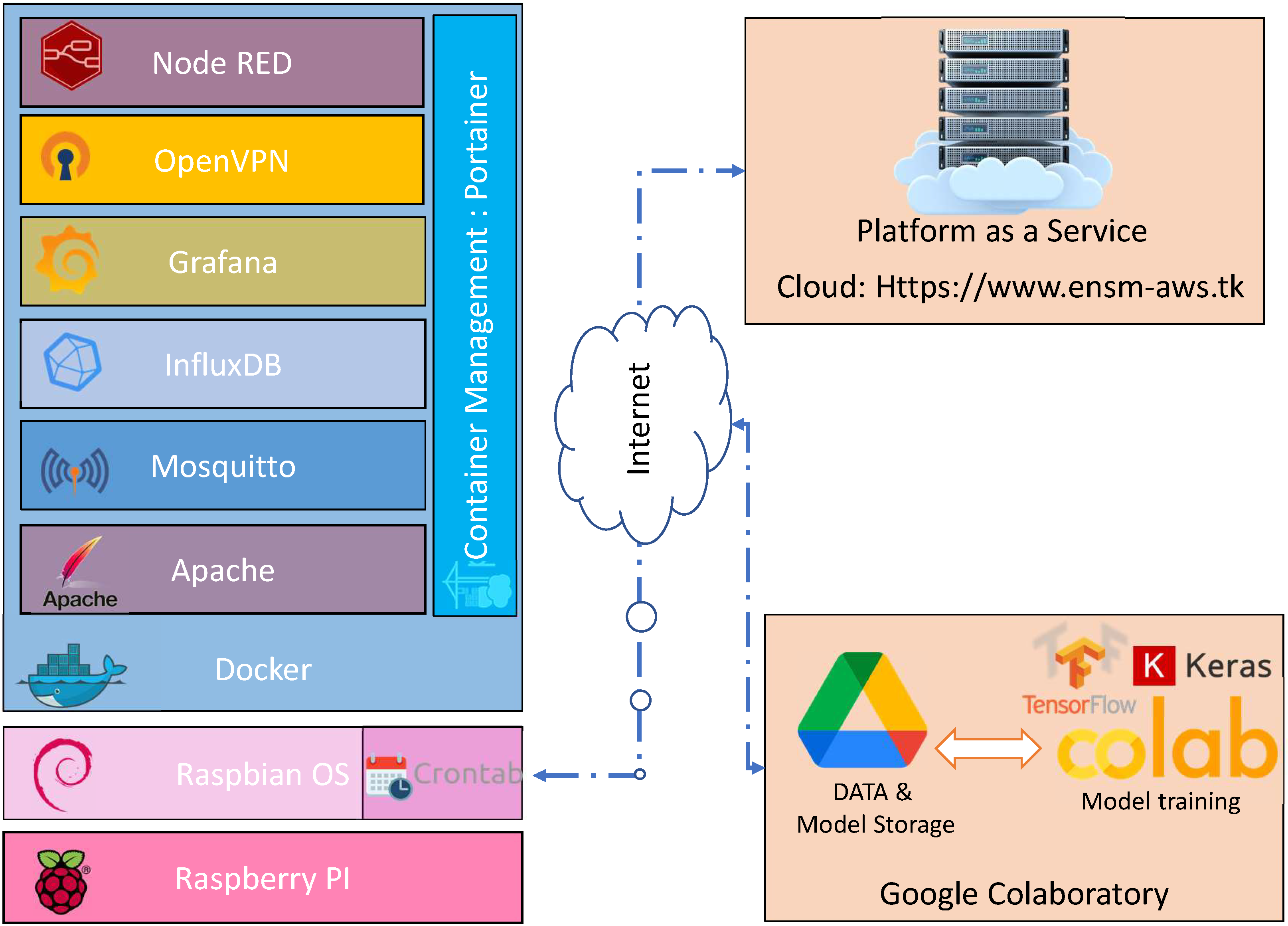
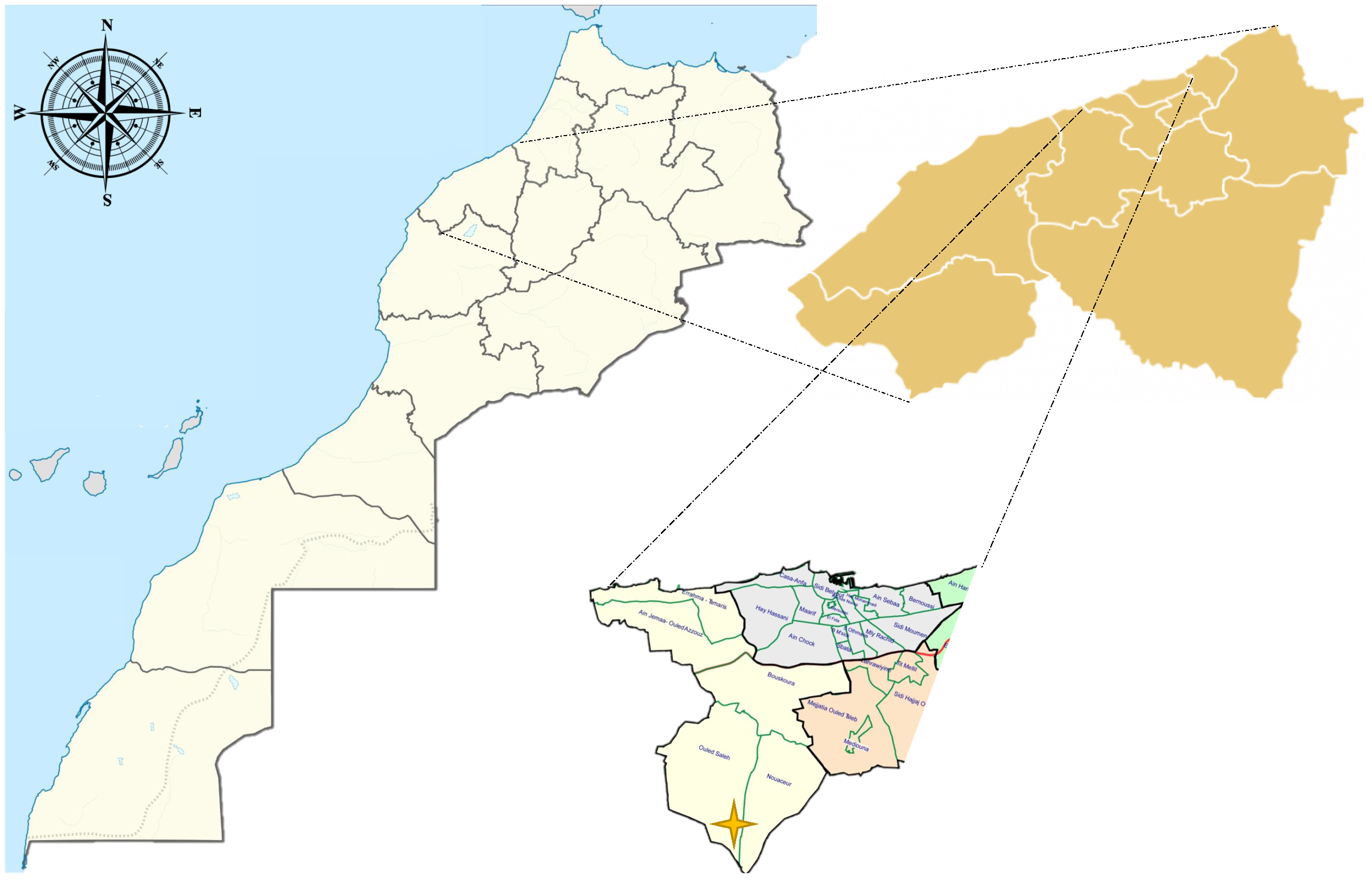
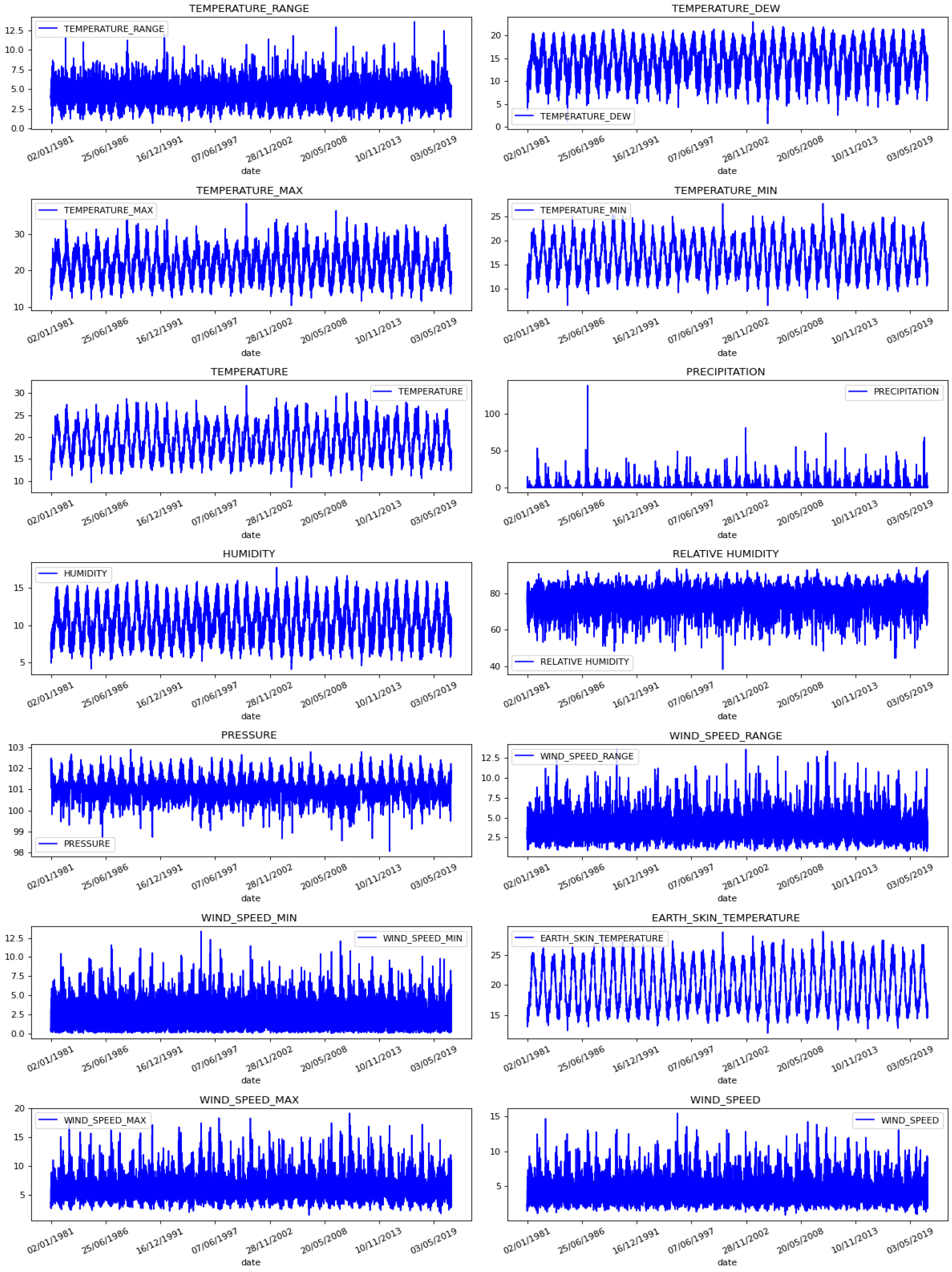
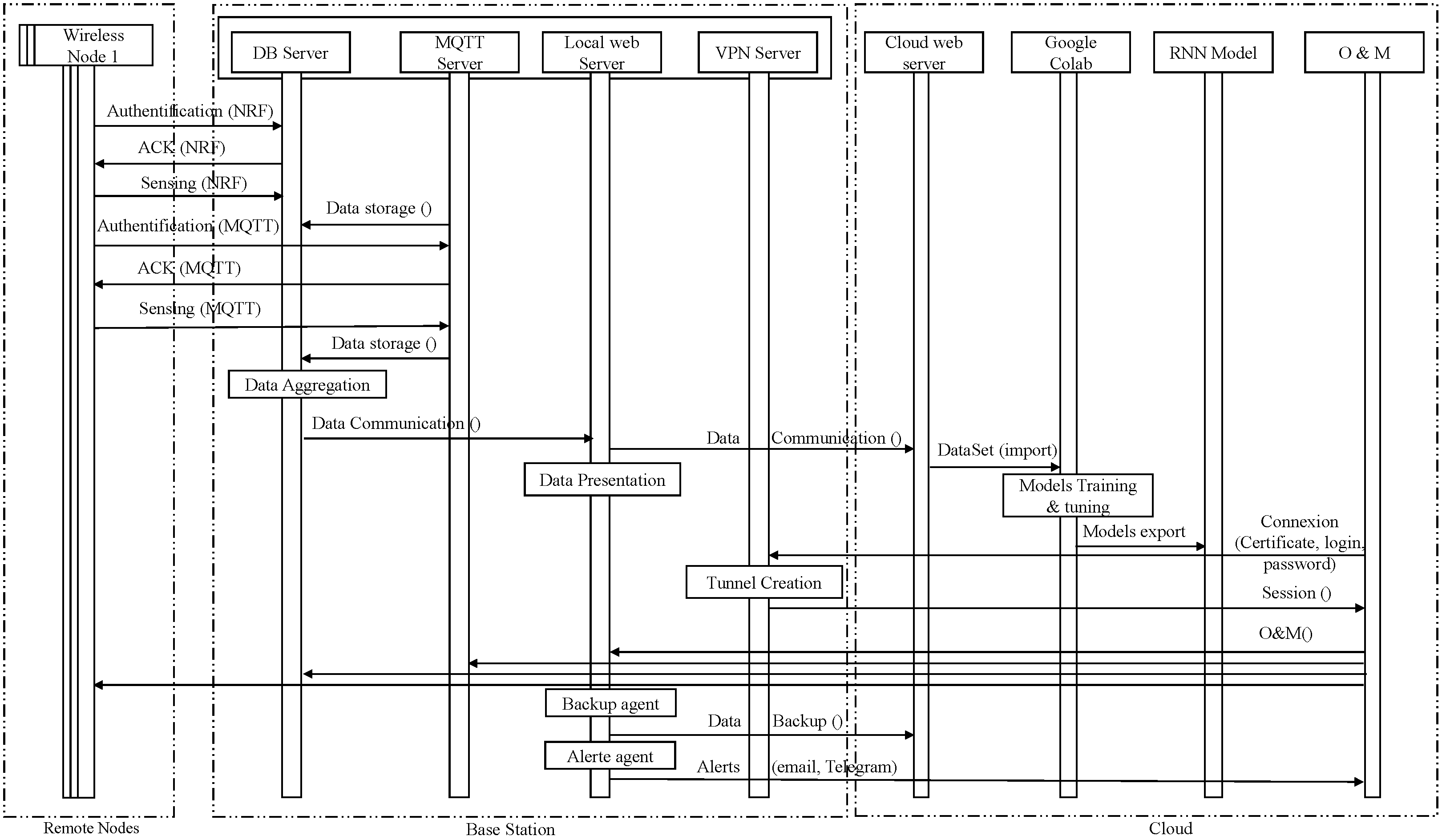
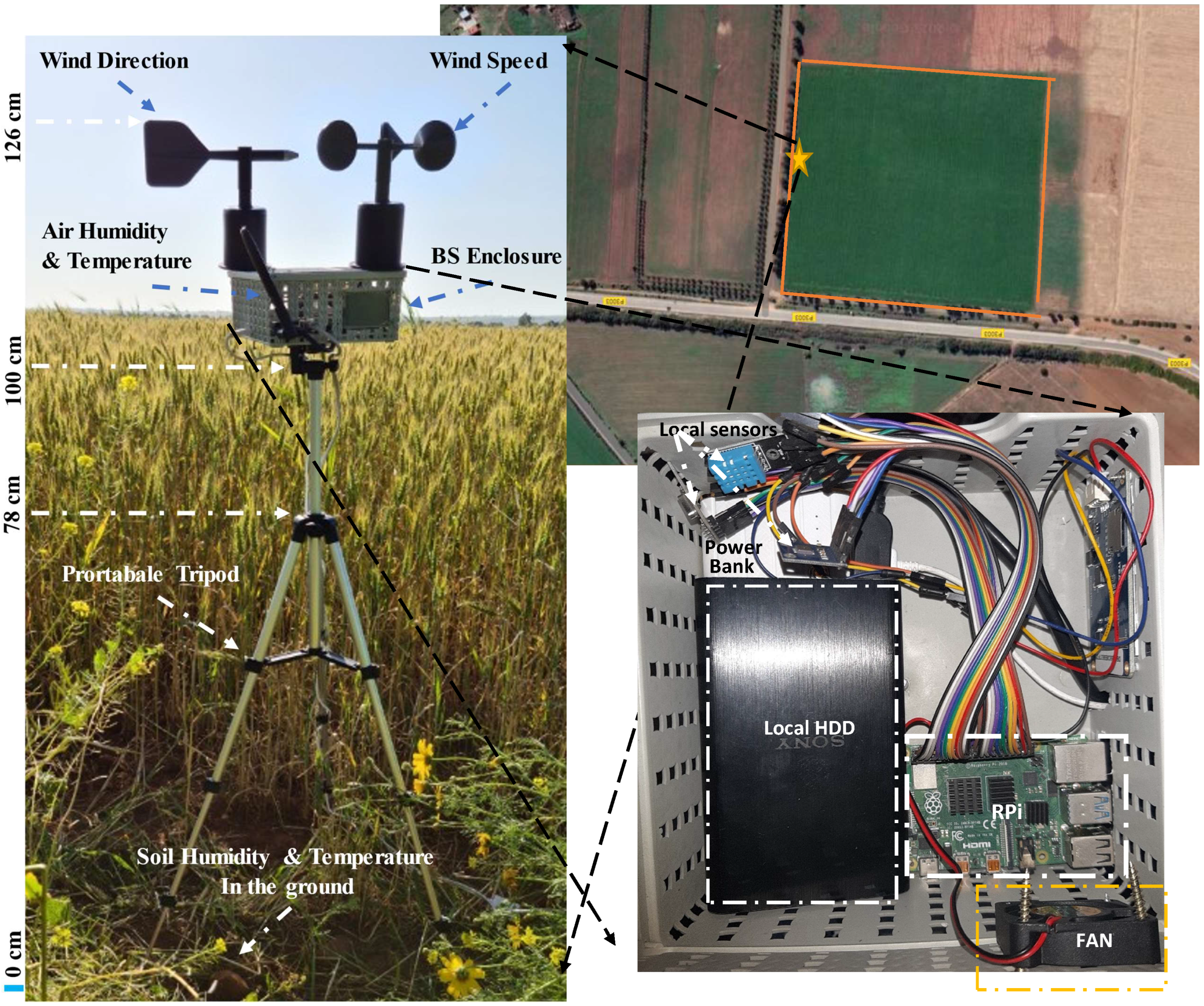
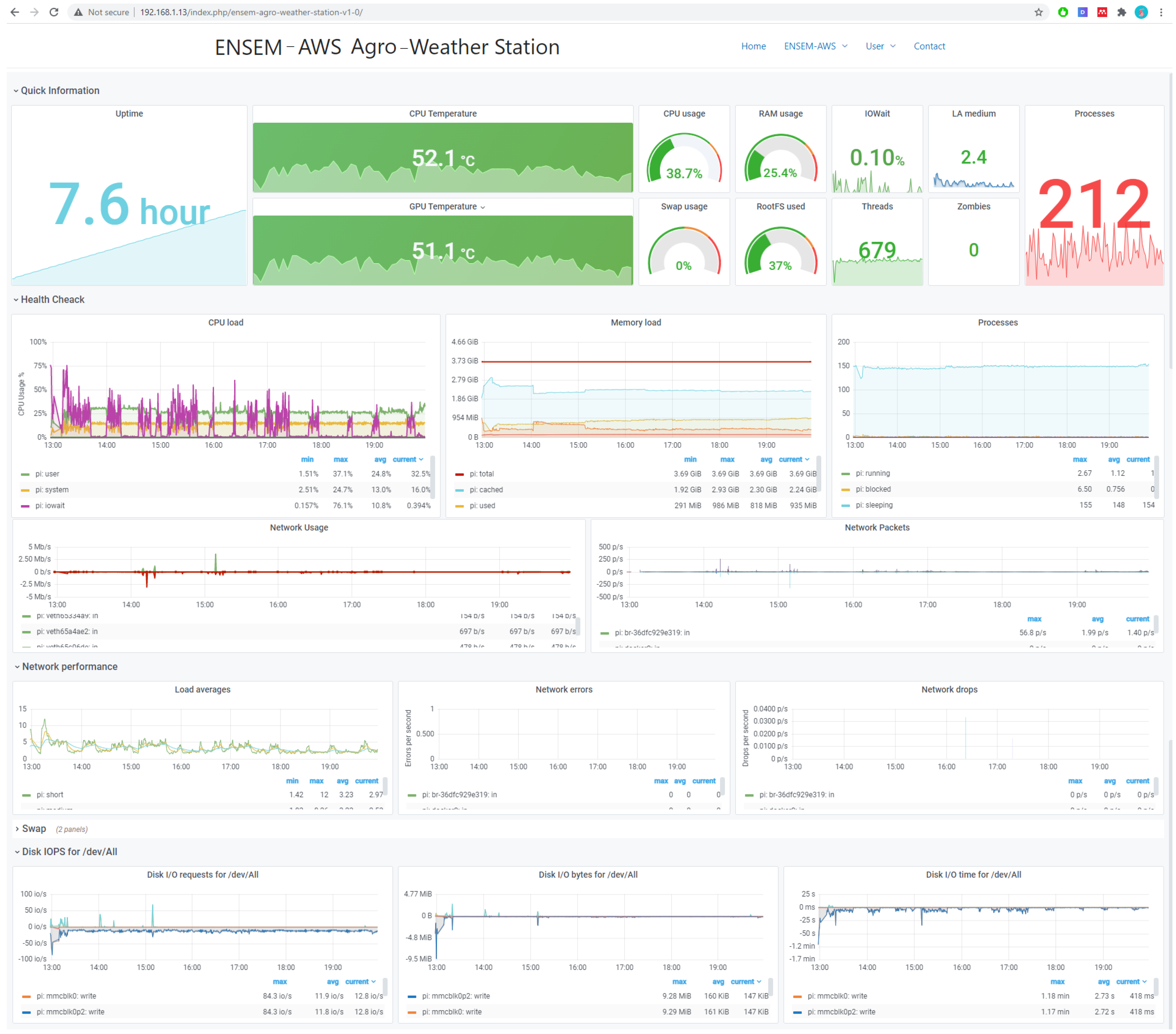
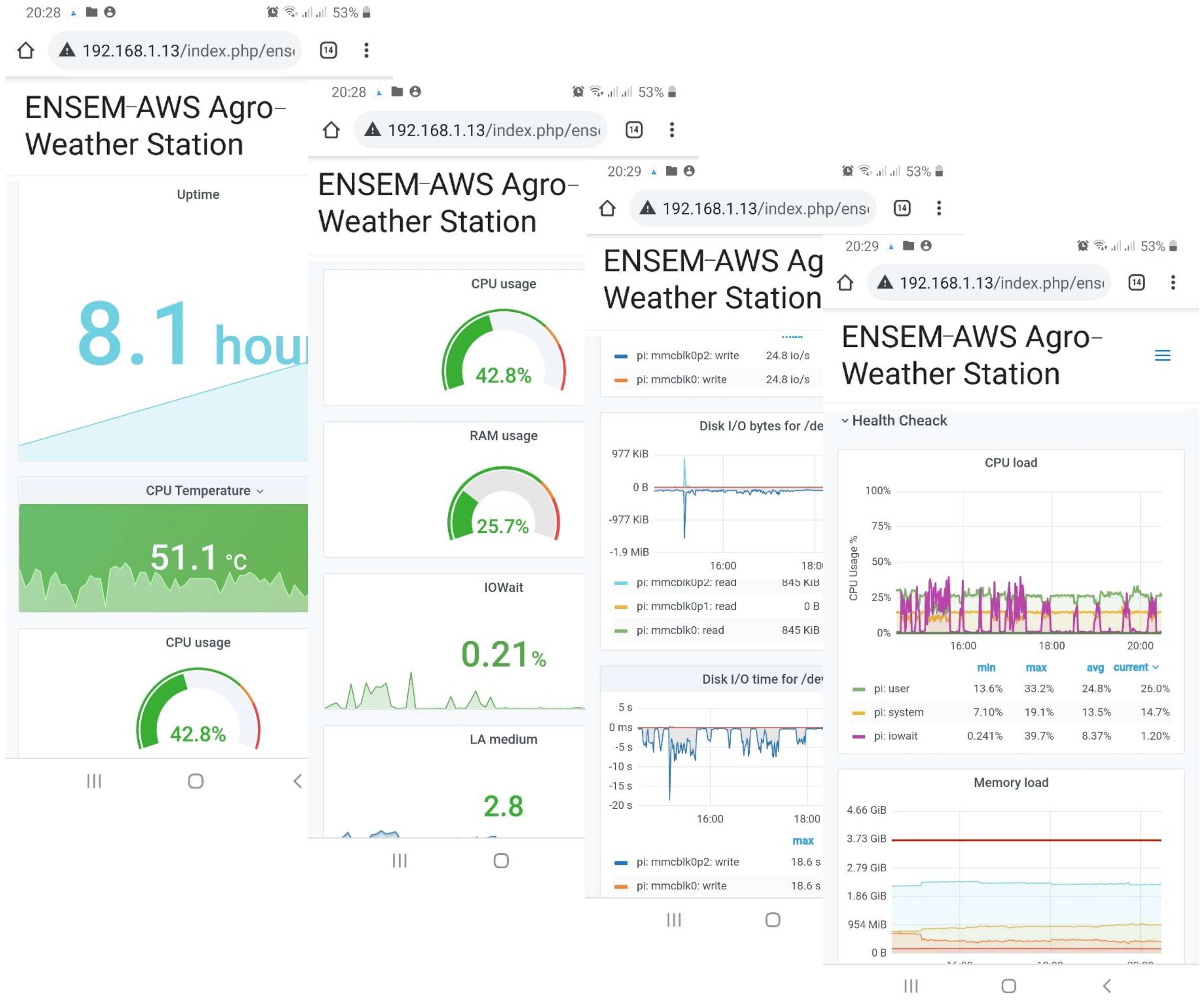
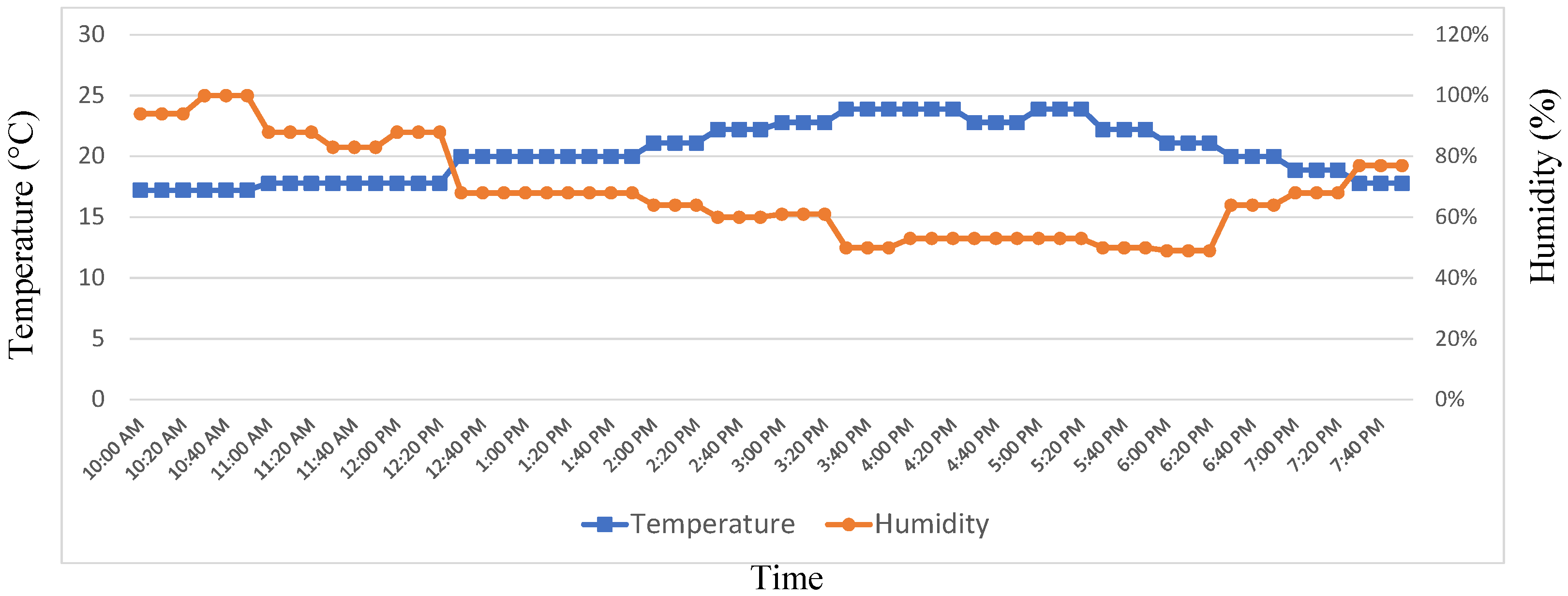
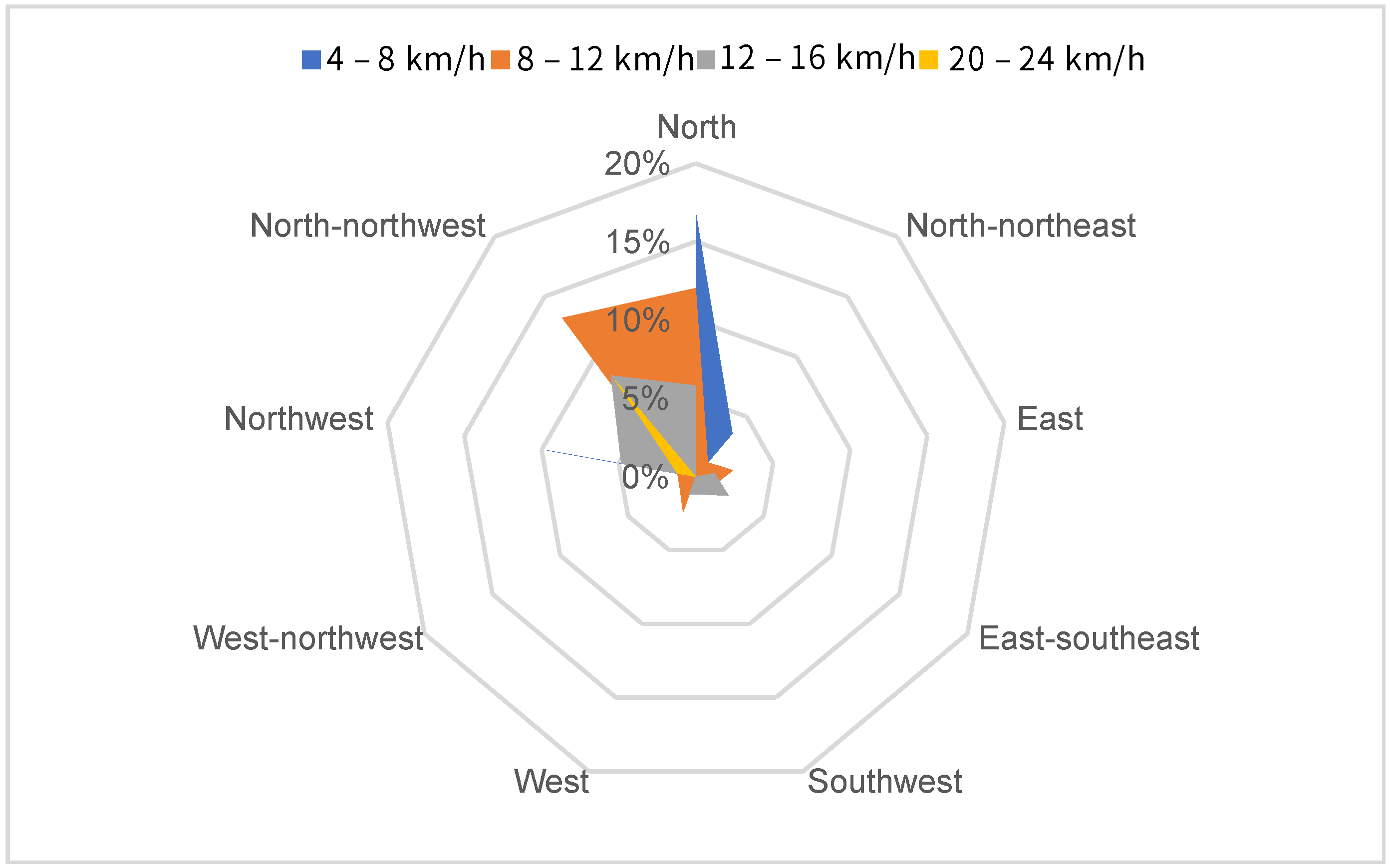

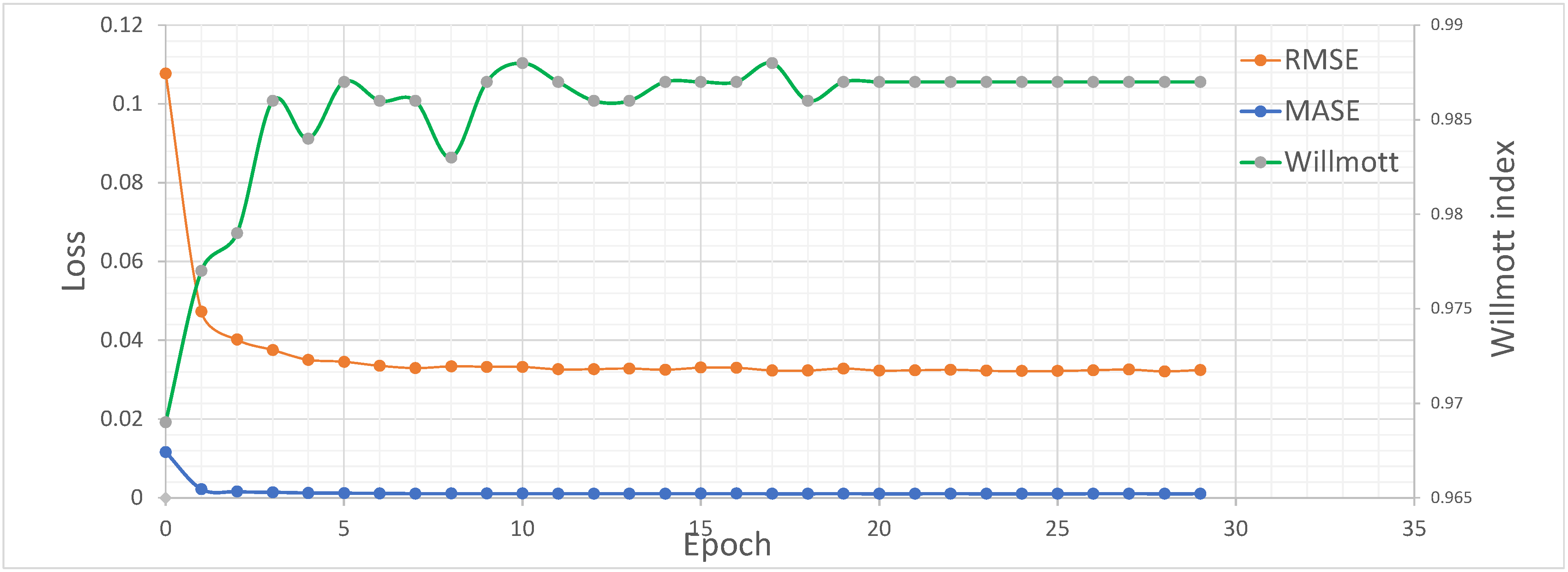
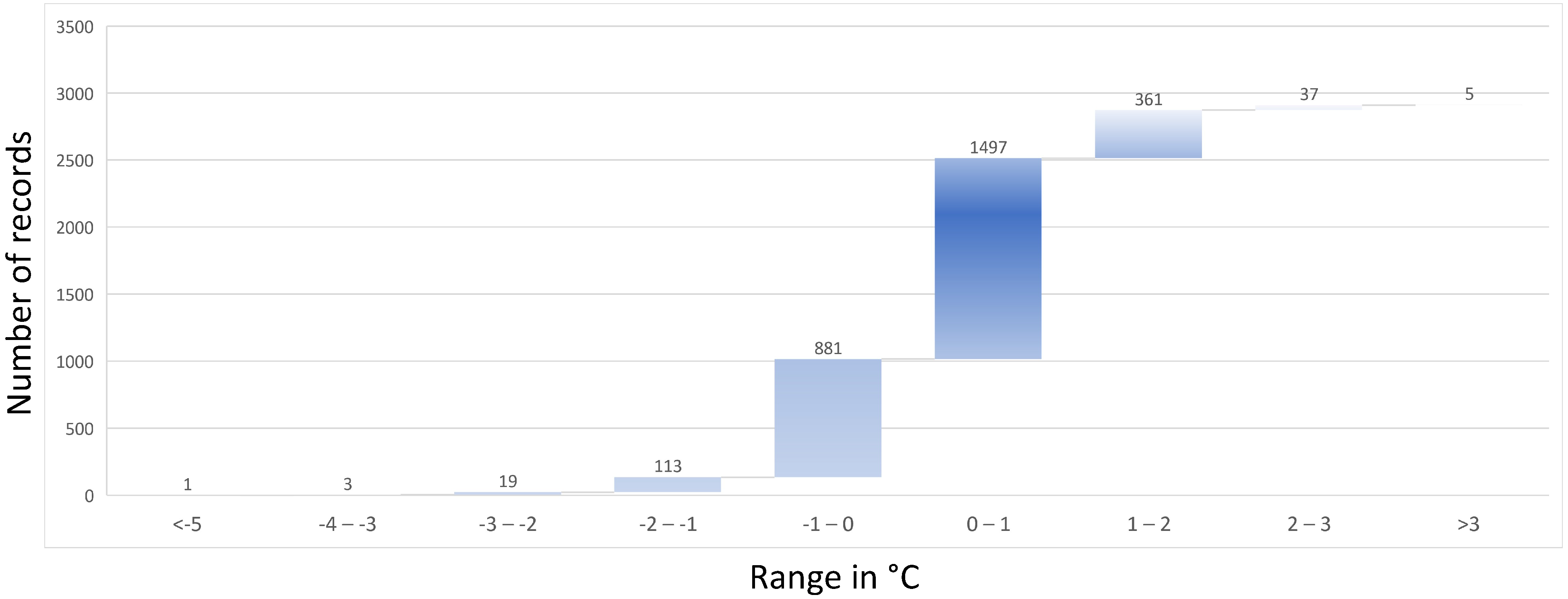
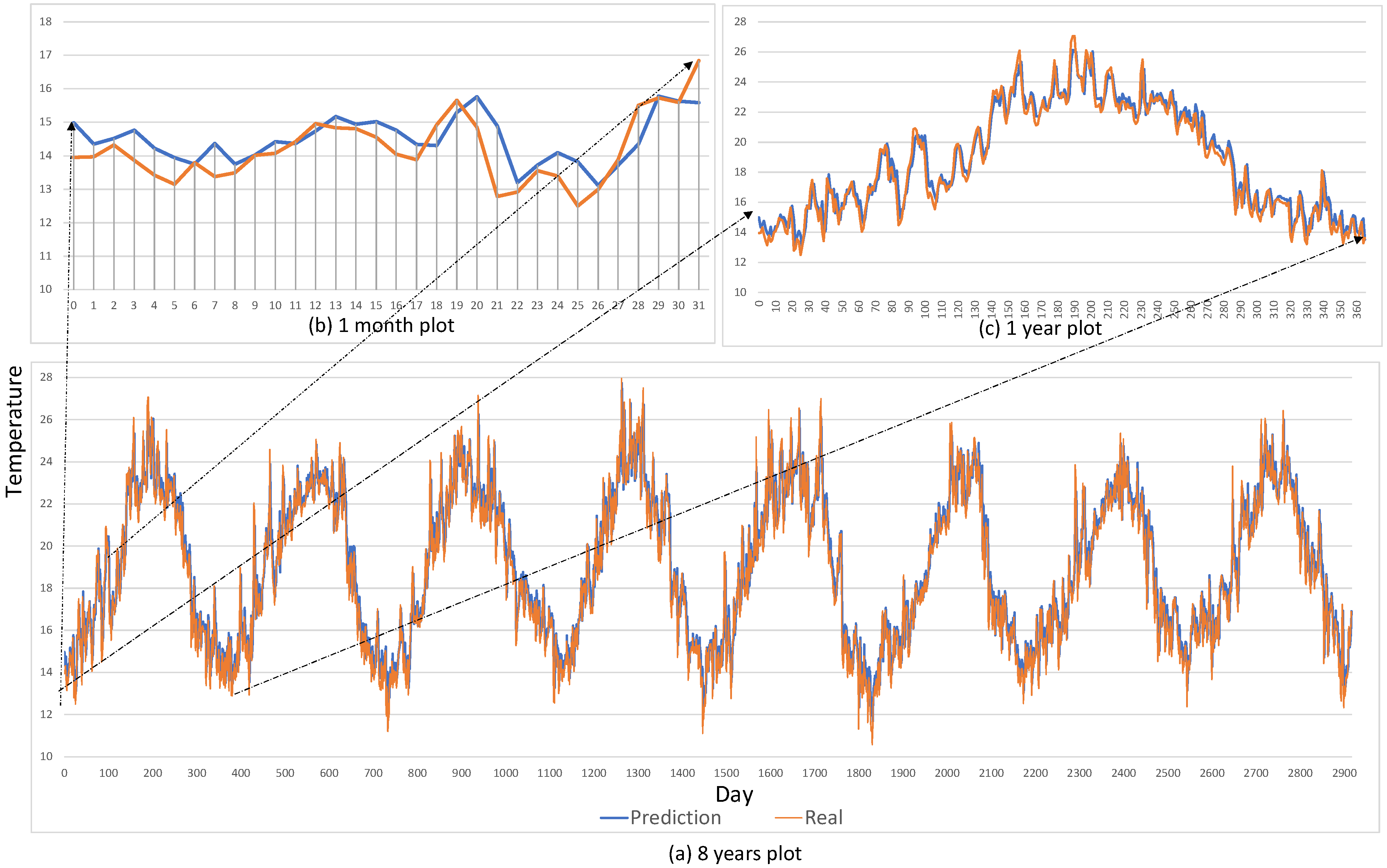
| Sensor | Range | Accuracy | Resolution |
|---|---|---|---|
| Air Temperature | to | ||
| Air Humidity | 0–100% | ||
| Soil Temperature | – | ||
| Relative Permittivity | 1–81 | <0.02 | |
| Wind Speed | 5–100 | 1 | |
| Wind Direction | – | ||
| Solar Radiation | 360 to 1120 | 1 |
| Parameters | Standards | Band | Data Rate | Range | Energy Effeciency |
|---|---|---|---|---|---|
| WIFI | IEEE 802.11 | 2.4–60 GHz | 1 Mbps–7 Gbps | 20–100 m | Low |
| ZigBee | IEEE 802.15.4 | 2.4 GHz | 20–250 Kbps | 10–20 m | High |
| Bluetooth | IEEE 802.15.1 | 2.4 GHz | 24 Mbps | 8–10 m | High |
| MQTT | OASIS | 2.4 GHz | 259 Kbps | - | High |
| Cellular | 2G/3G/4G | 9000 MHz, 18,000 MHz, 21,000 MHz, 2700 MHz | - | - | Medium |
| LoRaWAN | LoRa R1 | 868/900 MHz | 0.3–50 Kbps | 30 km | Very High |
| SigFox | SigFox | 200 KHz | 100–600 bps | 30–50 km | Very High |
| Layer | Raspberry Pi | Docker | Node-RED | InfluxDB | MQTT | Web Server (Apache) | Cloud | Colab | VPN | Wireless Nodes |
|---|---|---|---|---|---|---|---|---|---|---|
| Perception Layer | YES | YES | YES | YES | ||||||
| Transmission Layer | YES | YES | YES | YES | YES | |||||
| Presentation Layer | YES | YES | YES | YES | YES | YES | ||||
| Management Layer | YES | YES | YES | YES | ||||||
| Middleware Layer | YES |
| Feature | Unit | Description |
|---|---|---|
| Temperature range | Celsius (°C) | Temperature range at a height of 2 m above the earth’s surface |
| Temperature dew | Celsius (°C) | dew/Frost point at a height of 2 m above the earth’s surface |
| Temperature Max | Celsius (°C) | Maximum temperature at a height of 2 m above the earth’s surface |
| Temperature Min | Celsius (°C) | Minimum temperature at a height of 2 m above the earth’s surface |
| Temperature | Celsius (°C) | Temperature at a height of 2 m above the earth’s surface |
| Earth skin temperature | Celsius (°C) | Earth skin temperature at a height of 2 m above the earth’s surface |
| Precipitation | mm | Precipitation |
| Humidity | g/kg | Specific humidity at a height of 2 m above the earth’s surface |
| Relative humidity | % | Relative humidity at a height of 2 m above the earth’s surface |
| Pressure | kPa | Surface pressure |
| Wind speed range | m/s | Wind speed range at a height of 10 m above the earth’s surface |
| Wind speed Min | m/s | Minimum wind speed at a height of 10 m above the earth’s surface |
| Wind speed Max | m/s | Maximum wind speed at a height of 10 m above the earth’s surface |
| Wind speed | m/s | Minimum wind speed at a height of 10 m above the earth’s surface |
Publisher’s Note: MDPI stays neutral with regard to jurisdictional claims in published maps and institutional affiliations. |
© 2021 by the authors. Licensee MDPI, Basel, Switzerland. This article is an open access article distributed under the terms and conditions of the Creative Commons Attribution (CC BY) license (https://creativecommons.org/licenses/by/4.0/).
Share and Cite
Faid, A.; Sadik, M.; Sabir, E. An Agile AI and IoT-Augmented Smart Farming: A Cost-Effective Cognitive Weather Station. Agriculture 2022, 12, 35. https://doi.org/10.3390/agriculture12010035
Faid A, Sadik M, Sabir E. An Agile AI and IoT-Augmented Smart Farming: A Cost-Effective Cognitive Weather Station. Agriculture. 2022; 12(1):35. https://doi.org/10.3390/agriculture12010035
Chicago/Turabian StyleFaid, Amine, Mohamed Sadik, and Essaid Sabir. 2022. "An Agile AI and IoT-Augmented Smart Farming: A Cost-Effective Cognitive Weather Station" Agriculture 12, no. 1: 35. https://doi.org/10.3390/agriculture12010035
APA StyleFaid, A., Sadik, M., & Sabir, E. (2022). An Agile AI and IoT-Augmented Smart Farming: A Cost-Effective Cognitive Weather Station. Agriculture, 12(1), 35. https://doi.org/10.3390/agriculture12010035







